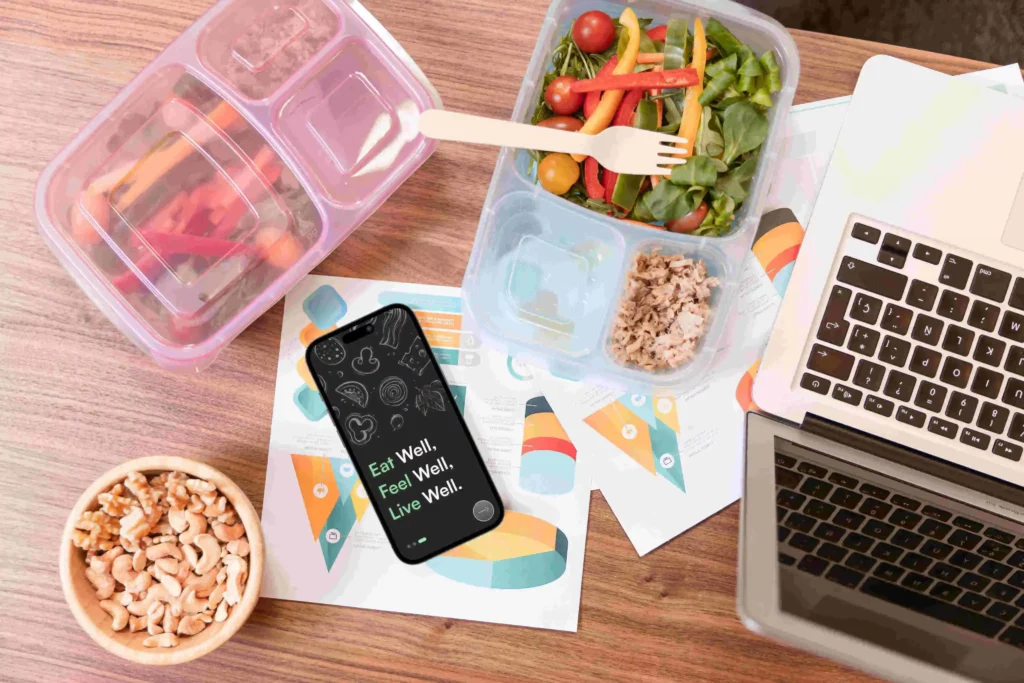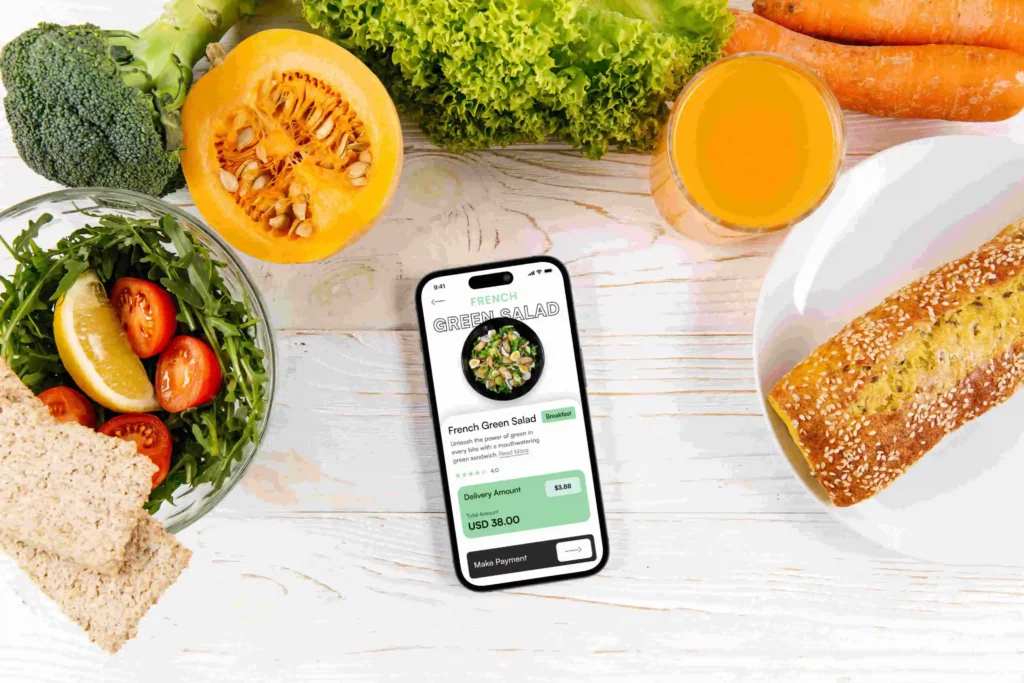Introduction
The rise of food delivery apps has changed the way people order food, creating a multi-billion-dollar industry that continues to grow. From restaurants offering direct delivery to third-party platforms connecting customers to multiple eateries, food delivery apps have become an essential part of modern dining.
Whether you’re a restaurant owner looking to offer in-house delivery or an entrepreneur wanting to build the next food delivery marketplace, developing a food delivery app can open new doors for your business. This guide will walk you through everything you need to know about creating a successful food delivery app, including key trends, must-have features, and expert tips for standing out in a competitive market.
Why Build a Food Delivery App?
With the ever-increasing demand for convenience, food delivery apps have become indispensable. Here’s why building a food delivery app is a great idea:
- Consumer Demand for Convenience: Customers expect fast, convenient delivery options for their favorite foods—whether it’s from their local restaurant or a meal from a large chain.
- Growth of the Gig Economy: Food delivery apps provide opportunities for drivers, expanding the gig economy and offering a flexible workforce for businesses.
- Digital Transformation for Restaurants: Having a food delivery app allows restaurants to stay competitive, reach new customers, and streamline operations.
- Recurring Revenue: Subscription services, delivery fees, and partnerships with restaurants can generate consistent income for food delivery app owners.
Key Trends in Food Delivery App Development
Before diving into development, it’s essential to be aware of the current trends shaping the food delivery industry. These trends can help guide the design and functionality of your app, ensuring it aligns with consumer expectations.
1. Contactless Delivery
In response to the pandemic, contactless delivery has become a must-have feature. Even as restrictions ease, many consumers still prefer no-contact delivery for health and safety reasons.
Key Features to Include:
- Contactless delivery options at checkout
- Photo confirmation of delivery for customers
- Real-time notifications when the order is left at the door
2. Sustainability and Eco-Friendly Options
More consumers are choosing restaurants and services that prioritize sustainability. Food delivery apps are increasingly integrating eco-friendly options, from using sustainable packaging to minimizing their carbon footprint through optimized delivery routes.
Key Features to Include:
- Eco-friendly packaging options highlighted for customers
- Carbon-neutral delivery or tracking of carbon footprints for each order
- Partnering with eco-conscious restaurants and suppliers
3. Hyperlocal Food Delivery
Hyperlocal delivery services focus on a smaller, more specific geographic area, allowing for faster delivery times and fresher food. It also helps local restaurants and food businesses reach nearby customers more efficiently.
Key Features to Include:
- Geo-fencing to limit delivery radius for faster service
- Real-time delivery tracking for local drivers
- Priority ordering for customers within a certain radius
4. AI-Powered Personalization
Personalization is becoming increasingly important in food delivery apps. Using AI to analyze customer preferences, order history, and dietary restrictions can help recommend meals and restaurants that fit individual tastes.
Key Features to Include:
- AI-powered recommendations based on past orders
- Personalized restaurant and meal suggestions
- Smart filters for dietary preferences (vegan, gluten-free, low-carb, etc.)
5. Multiple Payment Methods
Offering various payment options—credit card, digital wallets, and even cryptocurrency—enhances the user experience and provides flexibility. The more payment methods you offer, the easier it will be for customers to place orders.
Key Features to Include:
- Support for all major credit cards and digital wallets (PayPal, Apple Pay, Google Pay)
- Secure, encrypted payments with tokenization
- Split-payment options for group orders
6. Subscription Models and Loyalty Programs
To retain customers and boost engagement, many food delivery apps are offering subscription services or loyalty programs that provide perks like free delivery, exclusive discounts, or priority support.
Key Features to Include:
- Subscription-based model with perks like unlimited free delivery or discounted service fees
- Integrated loyalty programs that reward users with points, discounts, or free meals
- Personalized offers based on customer engagement and spending habits
Must-Have Features for a Food Delivery App

Creating a food delivery app requires balancing convenience, functionality, and user experience. Here are the essential features your app should include:
1. User-Friendly Interface
The user interface (UI) plays a significant role in the success of any app. A simple, clean, and easy-to-navigate design is crucial for encouraging users to place orders without frustration.
Key Features to Include:
- Simple onboarding process with account creation or social login options
- Intuitive navigation for browsing restaurants, meal options, and delivery details
- Clear calls-to-action (CTA) for adding meals to cart, placing orders, and tracking deliveries
2. Restaurant Listings and Menus
Your app should feature a comprehensive list of participating restaurants, with detailed menus that include photos, descriptions, and pricing. Categorization and smart filtering options should make it easy for users to find the food they want.
Key Features to Include:
- Comprehensive restaurant listings with detailed menus
- Filters for cuisine types, dietary preferences, price, and delivery times
- Menu descriptions with photos, prices, and available customization options (sides, toppings, etc.)
3. Real-Time Order Tracking
Once an order is placed, users should be able to track their order in real time—from restaurant preparation to driver pickup to delivery at the customer’s doorstep.
Key Features to Include:
- Real-time GPS tracking of delivery drivers
- Push notifications for every stage of the delivery (order received, driver en route, food delivered)
- Estimated delivery time updates based on real-time traffic and restaurant prep times
4. Secure Payment Processing
Payments should be fast, easy, and secure. Your app must support various payment methods and guarantee the safety of customer data through encryption and other security protocols.
Key Features to Include:
- Multiple payment options (credit card, digital wallets, etc.)
- Secure payment gateways with data encryption
- Tokenization for sensitive card information and PCI compliance
5. Driver and Courier Management
For the operational side of your food delivery app, you’ll need features that allow you to efficiently manage delivery drivers and couriers. This includes driver onboarding, route optimization, and performance tracking.
Key Features to Include:
- Driver onboarding process with background checks and documentation uploads
- Route optimization tools to help drivers find the fastest routes
- Performance tracking with delivery metrics like time, distance, and customer satisfaction
6. Rating and Review System
A robust rating and review system for both restaurants and delivery drivers is essential for maintaining quality control and ensuring customer satisfaction. It also helps customers make informed decisions.
Key Features to Include:
- Star ratings and written reviews for restaurants and delivery drivers
- The ability for customers to leave feedback on food quality, delivery time, and service
- Restaurant and driver performance metrics based on customer reviews
7. Promotions, Coupons, and Discounts
Offering in-app promotions and discounts can help attract new customers and retain existing ones. These offers should be easy to apply at checkout and tailored to the user’s order history or preferences.
Key Features to Include:
- In-app promotions and discount codes
- Customizable coupons for first-time users, referral programs, or loyalty rewards
- Automated reminders for expiring offers or unused promo codes
8. Push Notifications and Alerts
Push notifications help keep customers informed about order statuses, promotions, and special deals. They also improve user engagement by reminding customers to place orders or revisit the app.
Key Features to Include:
- Push notifications for order confirmation, delivery tracking, and special offers
- Customizable notifications based on user preferences
- Alerts for restaurant promotions, new menu items, or loyalty rewards

Pro Tips for Building a Successful Food Delivery App
To create a standout food delivery app, consider these expert tips during the development process:
1. Start with an MVP and Iterate
Begin by developing a Minimum Viable Product (MVP) with the core features: restaurant listings, order processing, and delivery tracking. Once you gather feedback, iterate and add advanced features like personalized recommendations, subscription models, or loyalty programs.
2. Focus on Performance and Speed
Food delivery apps must work quickly and efficiently. Long load times or crashes can lead to frustrated users and abandoned orders. Ensure your app is optimized for performance on both iOS and Android devices.
3. Build Relationships with Local Restaurants
Your app’s success depends on the quality and variety of restaurants you offer. Partnering with popular local eateries or emerging culinary hotspots can give your app an edge over larger, more generic platforms.
4. Leverage Data Analytics for Personalization
Use data analytics to better understand your customers’ preferences and ordering habits. This data can help you offer personalized deals, suggest new restaurants, and improve user retention.
5. Ensure Cross-Platform Compatibility
Your app should run seamlessly across both iOS and Android devices. Ensure the user experience remains consistent regardless of the platform, and optimize for various screen sizes and device capabilities.
Conclusion

Developing a food delivery app is a lucrative venture that requires a balance of great user experience, restaurant partnerships, and operational efficiency. By focusing on trends like personalization, contactless delivery, and sustainability, and incorporating essential features like real-time tracking and secure payments, you can create a successful app that meets the needs of modern consumers.
Whether you’re a restaurant looking to expand your delivery options or an entrepreneur aiming to build a food delivery platform, now is the time to invest in building a scalable, user-friendly app that connects customers with great food.
Ready to build your own food delivery app? Partner with an experienced mobile app development team that understands the intricacies of the food delivery industry and can help bring your vision to life.
